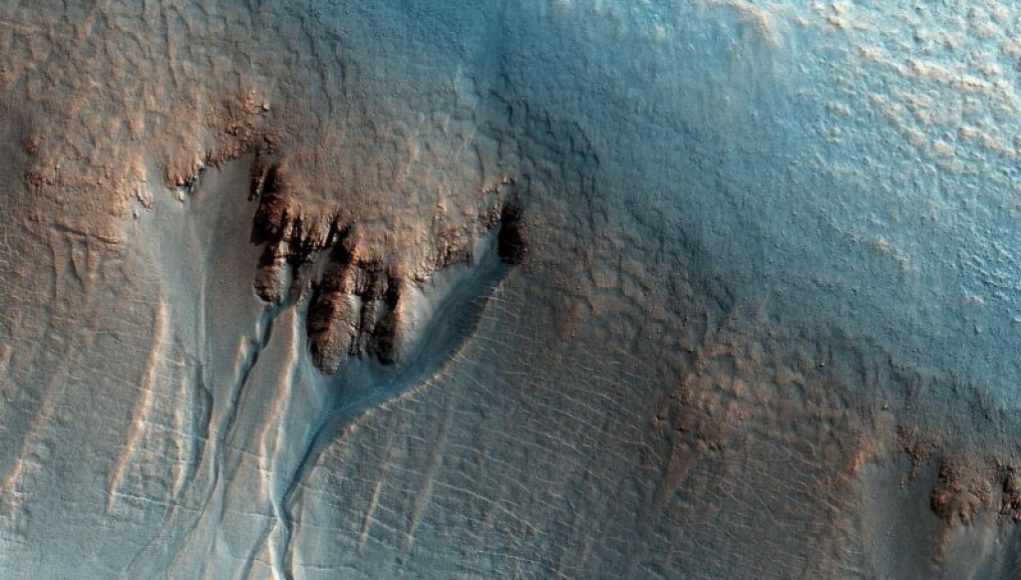Explore the fascinating world of Mars with us! While most of the planet appears to be a barren desert, new research suggests that small quantities of water may still exist in unexpected places. In fact, China’s Zhurong rover recently discovered evidence of liquid water having been present less than half a million years ago in the Utopia Planitia region near the equator. This discovery challenges previous assumptions about the planet’s ability to sustain liquid water due to its thin atmosphere and exposure to intense radiation and solar wind.
But how did this water get there? According to geologist Xiaoguang Qin and his team, Mars has gone through different epochs just like Earth, with warm and humid periods that allowed water vapor from the frozen poles to spread to the equator. This vapor would solidify into snow or frost during cooler weather and fall to the ground, eventually melting and evaporating, leaving behind salty crusts.
This discovery has exciting implications for the potential habitability of Mars, and future rovers may search for signs of life in areas that were previously overlooked. As Qin and his team suggest, priority should be given to salt-tolerant microbes in future missions searching for extant life on Mars.
Join us in exploring the mysteries of the Red Planet and stay tuned for more exciting discoveries!
China has made history as the first nation ever to have their space probe take pictures of water ice on Mars.
Today, the Chinese Mars rover Zhurong has successfully captured images of the red planet’s water-shaped crust. This groundbreaking discovery is significant as it could provide further evidence of potential water sources on the Martian surface, potentially leading to possibilities for human habitation in the future.
The images from Zhurong show a series of gullies running along the edges of the Martian craters, revealing a greater complexity of the planet than previously thought. Scientists believe the gullies are evidence of liquid water on the Martian surface, which could provide an explanation for the water-shaped crusts.
The Chinese National Space Administration (CNSA) is leading the investigation into the discovery, with scientists from the China University of Geosciences (CUG) lending their expertise to the task.
Speaking on the findings, CUG scientist Zhou Peizhong said: “The discovery of water ice on Mars is a major breakthrough for us and our exploration of the red planet. We are now one step closer to understanding the conditions necessary for human habitation on Mars – the possible existence of liquid water on its surface is a major factor in making that happen.”
The images captured by Zhurong are the first to provide visual evidence for the presence of water on Mars, a major milestone in the search for extraterrestrial life. It is a great result for the CNSA and CUG, and their efforts to explore our neighbouring planets.
As our understanding of the universe expands, the CNSA and CUG are determined to unlock the secrets of Mars and search for further signs of alien life beyond our Earth. The recent images of water-shaped crusts are only the beginning.
Source: SciTechDaily




















